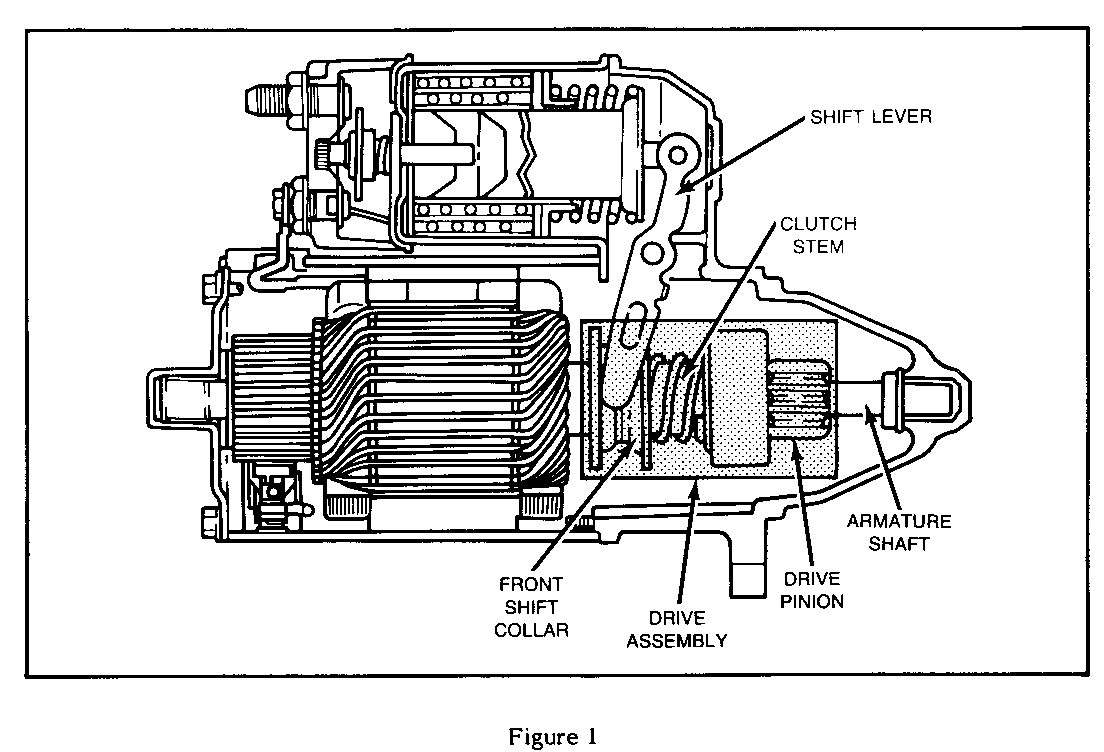INTERMITTENT 'CLICK' FROM STARTER - DIAGNOSIS / REPAIR

MODELS AFFECTED: 1983 - 1985 RWD BROUGHAM 1985 FWD DE VILLE AND FLEETWOOD
Some 1983-1985 RWD Broughams and 1985 FWD De Villes and Fleetwoods which were equipped with Delco 5MT starter motors may experience a solenoid "click" with no engine crank condition.
This condition may be caused by a burr that has built up on the inner diameter surface of the front shift collar (Figure 1). The burring may restrict or prevent the movement of the shift collar on the clutch stem of the starter drive assembly. If this occurs, shift lever movement is stopped, preventing the solenoid contacts from closing. The result is a solenoid "click" with no starter operation. Starters built after July, 1985 have a hardened and deburred front shift collar to prevent this condition from occurring.
To repair this condition, it is important to first check the usual causes for a starter "no crank" condition. These include (but are not limited to):
o Check for discharged or defective battery. o Check for excessive starting system circuit resistance. o Check for defective starter solenoid. o Check for defective ignition switch.
An infrequent, but normal, possibility for a "click, no crank" condition may be starter butt engagement. This occurs when the drive pinion teeth contact the ring gear teeth without meshing. Repeat attempts to crank result in immediate pinion engagement and a successful engine crank.
If the above causes do not isolate the problem, replace the starter drive assembly following procedures in the appropriate model Service Information Manual. Check the shift lever lugs in the area of contact with the shift collars. Replace the shift lever if wear is evident.
For warranty purposes, use Labor Operation J4600 at 0.6 hours for RWD Brougham, 0.9 hours for FWD De Ville/Fleetwood.

General Motors bulletins are intended for use by professional technicians, not a "do-it-yourselfer". They are written to inform those technicians of conditions that may occur on some vehicles, or to provide information that could assist in the proper service of a vehicle. Properly trained technicians have the equipment, tools, safety instructions and know-how to do a job properly and safely. If a condition is described, do not assume that the bulletin applies to your vehicle, or that your vehicle will have that condition. See a General Motors dealer servicing your brand of General Motors vehicle for information on whether your vehicle may benefit from the information.
